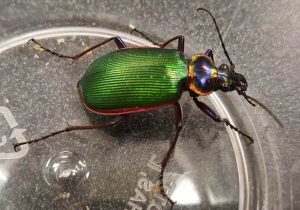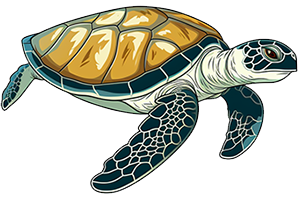
Have you ever thought about how insects with 6 legs actually crawl? Human movement on two legs is pretty simple: left-right-left-right, but all insects have 6 legs attached to a thorax. In this activity, I ask students to observe an insect closely, usually a dubia roach in a beaker, but you could use any insect.
Dubia roaches are sold on amazon, but a local pet store will be much cheaper, plus they are easy to keep in a classroom and can be used in other experiments and projects. I would also avoid using any type of insect that jumps, just because they are harder to handle and don’t tend to crawl with 6 legs like a roach or beetle crawls.
Students can do this type of activity as a first-day, getting to know you lesson or as part of a broader unit on insects or bioinspiration.
Instructions:
1. Students will start with an insect on their desk or lab tables, contained either in a beaker or a petri dish.
As they filter into class, many of them will probably be curious about their new pet, give them time to explore while you get class started, though warn them not to let the insect out of its container.
2. Ask students to consider how a human moves (left-right-left-right) and tell them they are going to observe insects and determine how they move.
Their task is to create a model of insect movement using three members of their group. (Groups can be 4 members, but only 3 will be needed as a model, since insects have 6 legs.)
*If students are having trouble visualizing how to model this, ask them how a dog walks and how you and another person could demonstrate that. You could even pick a volunteer and ask the class to make suggestions (left side then right side, front then back, left front – right back then right front – left back).
3. Each group will then demonstrate the insect walk using three members of their group to represent the 6 legs of an insect. This is the fun part!
.
Spoiler alert: Insects crawl using a tripod movement, the front and back left leg will be touching the ground and the middle leg on the right side will be touching the ground. Then it alternates. Your students may not all come to this conclusion, but I use this exercise as a basic “observation and communication” science practice. This year I plan to do this as a first-day activity so students in biology start on day one doing science. You can also have students upload a video of their group movements to a CMS.
As an extension, you can talk about Rhex, the 6 legged robot (hexapod) whose design was inspired by insects. This type of movement has been shown to be stable on rough terrain.

